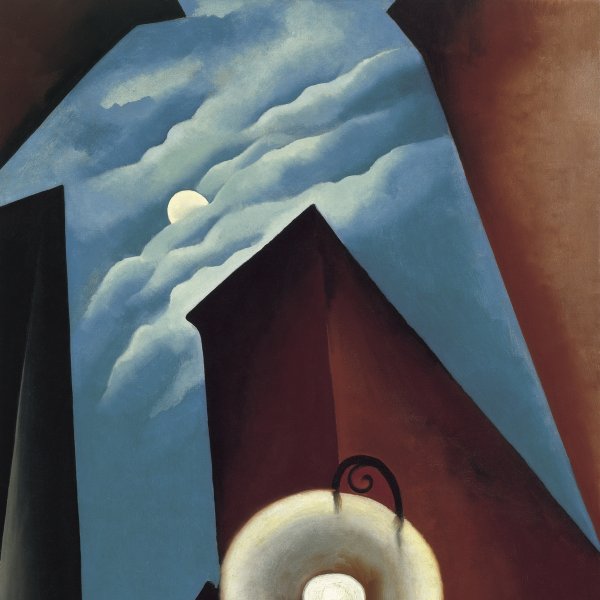Shell and Old Shingle V
In the early 1920s Georgia O’Keeffe produced isolated images of simple shapes found in nature such as shells, bones and flowers, in reaction to the excessive intellectualisation and insularity to which painting was being subjected at the time. Shell and Old Shingle V, executed in 1926, belongs to a set of small compositions devoted to these two natural objects. The painter herself described the chance circumstances that led her to create these paintings: “We were shingling the barn and the old shingles, taken off, were free to fly around. Absentmindedly I picked up a loose one and carried it into the house and up to the table in my room. On the table was a white clam shell brought from Maine in the spring. I had been painting it and it still lay there. The white shape of the shell and the grey shape of the weathered shingle were beautiful against the pale grey leaf on the faintly pink-lined pattern of the wallpaper. Adding the shingle got me painting again.”
O’Keeffe began the series with a fairly realistic rendering of the shingle and shell, and added two leaves to the first and third versions. The second and the sixth are fairly similar and the fourth version is perhaps the most abstract as it presents a more close up view. The fifth, belonging to the Museo Thyssen-Bornemisza, is similar to the sixth “but less abstract” according to the annotations found in the painter’s archives. In all of these compositions, O’Keeffe shows her constant concern with attempting to reconcile the tensions between realism and abstraction; indeed, the progression of the series was intended precisely to render natural forms in an increasingly abstract manner.
Oscar Bluemner, a painter of German origin, expressed his admiration for O’Keeffe in his introduction to the catalogue of her solo exhibition in 1927 at The Intimate Gallery recently opened in New York by her husband Alfred Stieglitz, in which the present painting was shown. The delicate facture and the exquisite luminosity of the composition, which appear to lend grandeur to these humble objects, no doubt contributed to her success.
Paloma Alarcó









